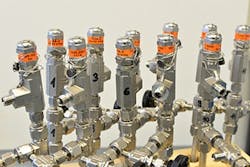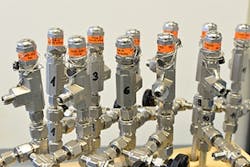Machine Learning Boosts Formaldehyde Yield
A team led by Oliver Trapp, a chemist at Ludwig Maximilians University (LMU) in Munich, previously described a reaction scheme that allowed synthesis of a formaldehyde derivative in a single step and at a lower temperature than the traditional syngas-based route. Now, the researchers have improved the process with a new workflow based on an algorithm constructed with the aid of machine learning.
They varied seven factors — including reaction temperature, partial pressures of hydrogen and carbon dioxide, reaction time, amount of catalyst and reaction volume — and then used the data to train the algorithm.
“This allows the algorithm to construct a mathematical relationship between these input data and the corresponding results. The resulting mathematical model can be progressively tuned,” notes Trapp.
Using this method, the LMU team developed hundreds of different reaction schemes until the process was optimized. An article in a recent issue of Chemical Science provides details.
Figure 1. These played a key role in optimizing the formaldehyde synthesis route. Source: Oliver Trapp.
The project is part of an initiative funded by the German government to boost industry/academic collaborations; BASF has been involved from the start. The Ludwigshafen, Germany, company currently is working on lifecycle analyses as well as engineering adaptations the process would require for scaleup.
Trapp foresees several chemistry and engineering challenges ahead for any potential scaleup. One centers on whether the ruthenium catalyst will prove as stable and active at higher concentrations as it is under small-scale laboratory conditions.
“In addition, it must be possible to recover the catalyst in high yield in a process without excessive energy consumption. This last point is an important part of the process design, since the recycling of the catalyst must be taken into account when separating the products,” he explains.
Thus, he adds, the choice of reaction solvent also is crucial because any purification process must be able to separate product from the solvent, catalyst and any intermediate compounds formed.
“It is important that the energy saved by the efficient one-step process is not merely shifted into excessive distillation energy,” Trapp stresses.
“A pilot plant would be a realistic next step in the process of industrial adaptation,” he notes.
åTrapp also points out that the algorithm-based workflow strategy has huge potential for optimizing many other chemical processes; he is looking to collaborate with industry and other research groups to investigate this.

